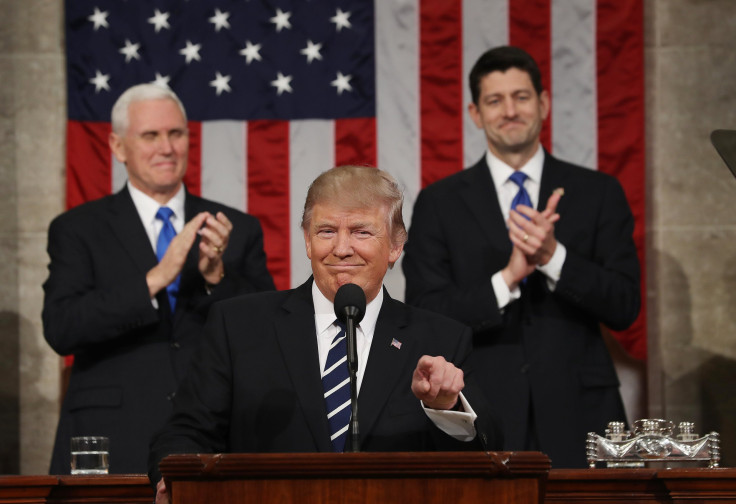Donald Trump's Tax Plan Shortchanges Working Families. This Is The Reform They Need

Donald Trump’s new tax plan, revealed last Wednesday, ignores the working families he campaigned for, while delivering a windfall for the wealthy. The ethnically and geographically diverse group of working class people have been hit hard by the economic trends of recent decades. Improving their circumstances would be a better goal, but Trump's plan leaves them out.
Donald Trump addressed hard-pressed working families in his campaign for President: “These are the forgotten men and women of America.” He declared his intention to represent them, the “people who work hard but don’t have a voice… Too many of our leaders have forgotten that it’s their duty to protect the jobs, wages and well-being of American workers before any other consideration.”
The tax plan addressed none of these problems. He could have proposed to strengthen key elements of the tax code that boost the incomes of people who work for low or modest wages and encourage more people to work: the Earned Income Tax Credit (EITC) and the part of the Child Tax Credit (CTC) is focused on working families with limited incomes. Both of these tax credits are designed specifically to target working-class families with children.
These credits offer a simple bargain, that if you work hard at a job paying low or modest wages, the credits will boost your pay. Typical occupations for EITC-eligible working-class people include traditional blue-collar jobs in transportation and construction as well as service-sector jobs in retail, food service, and health care.
But despite their proven successes, these tax credits could do more to help working families make ends meet. The EITC’s most glaring gap is that it excludes many low-wage workers who do not raise children in their homes, but also face economic pressures. This hole in the EITC allows the federal tax code to move millions of such workers deeper into poverty.
Both House Speaker Paul Ryan and Democratic policymakers, including Barack Obama while he was in office, have advanced proposals to close this gap. Democratic policymakers have also proposed improving the CTC for low-income families with young children.
In addition, some policymakers have begun to consider more ambitious proposals to help address the stagnation of incomes for many low-wage and middle-income workers over recent decades. Rep. Ro Khanna recently injected into the debate a proposal that would boost the EITC substantially for lower-wage and middle-class households so that the income gains from a growing US economy are more broadly shared.
Despite Trump’s campaign rhetoric, however, his new tax plan largely ignores working-class people. Its increase in the standard deduction — its most-touted “middle-class tax cut” — misses at least 17m working families and individuals who don’t earn enough to owe federal income taxes, even though they may pay substantial payroll and state taxes.
Instead, the Trump plan would deliver massive, windfall tax cuts to the wealthiest Americans and large profitable corporations. The plan would cut the corporate tax rate more than in half to 15%. It would also cut the corporate tax rate on the foreign profits of US-based multinational corporations to zero, giving these multinationals an advantage over U.S. companies in places like the Rust Belt, where many struggling working class families live. It would cut taxes sharply on a type of business income that flows overwhelmingly to very wealthy people such as hedge-fund managers, and eliminate the estate tax altogether even though it’s shrunk so much that it only applies to the heirs of the wealthiest two of every 1,000 estates in the country.
The Trump tax proposals would lose over $5 trillion in revenues over the next decade and deliver average tax cuts worth well over $250,000 a year to the highest-income 1% of Americans, even as these proposals largely bypass hard-pressed working-class families and individuals.
Making matters worse, policymakers eventually would have to pay for these big tax cuts for wealthy individuals and corporations. And when that bill comes due, many policymakers will argue they have no alternative but to cut programs such as Medicare and Medicaid on which working-class households and millions of other low- and middle-income families rely, in order to address the swelling budget deficits.
For less than $150 billion (rather than $5 trillion), Trump could have proposed to expand the EITC for low-wage workers without children and the CTC for working-poor families with children. Or, for about $1 trillion, he could have proposed a more ambitious plan to lift working- and middle-class incomes and narrow the ever-widening income gaps. Policymakers could offset those costs by closing tax loopholes and broadening the tax base.
As the tax debate unfolds in coming months, Trump should take specific steps and make specific proposals to improve the lives of people who work for low or modest wages. That would be better than making grand promises to working families but then ignoring them when he puts forth actual policies.
© Copyright IBTimes 2025. All rights reserved.





















